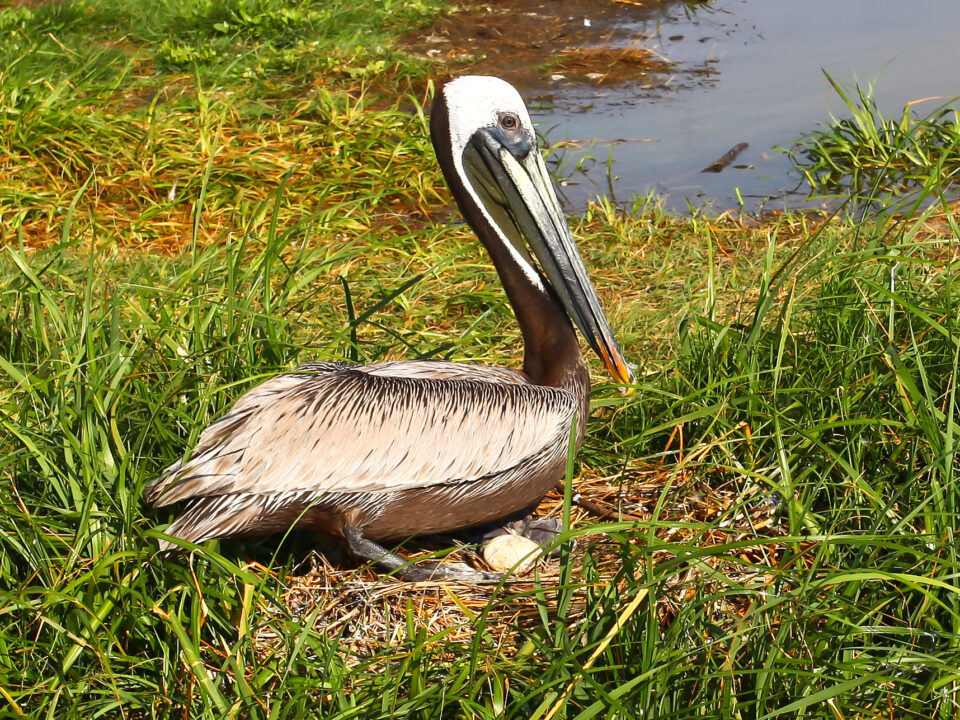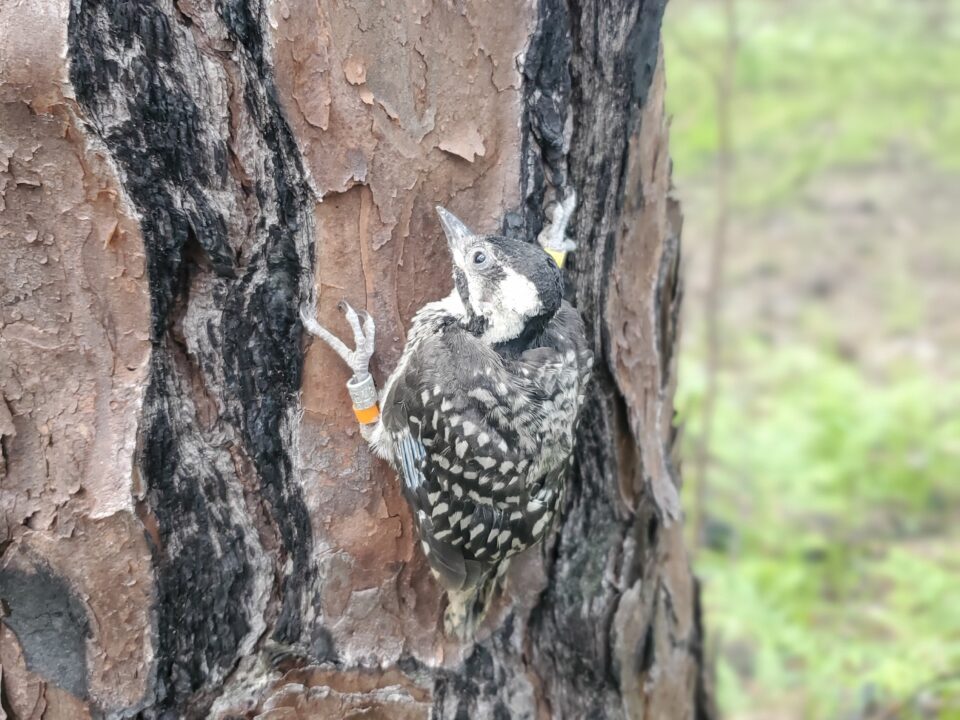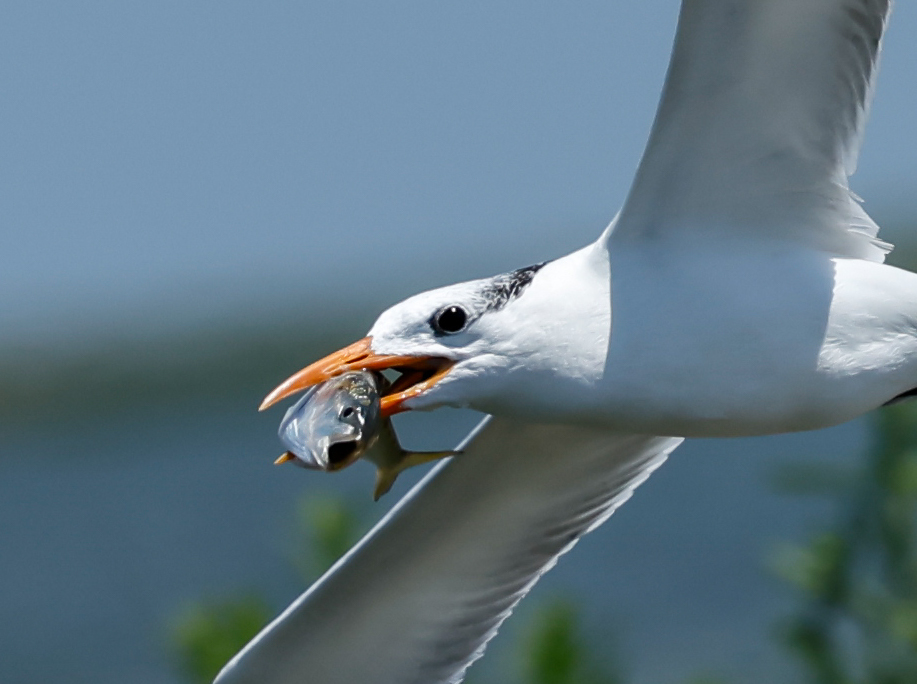Whimbrel connections
Happy reunion with rehabilitated eagle
May 6, 2009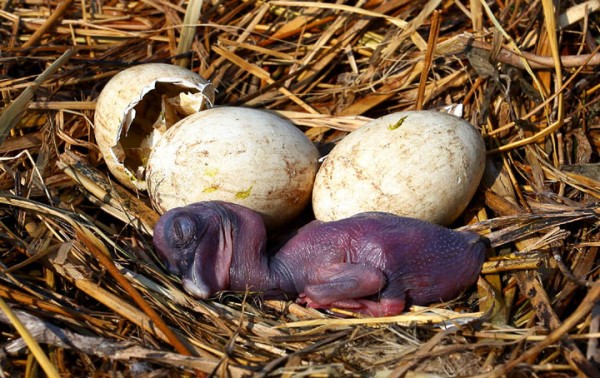
2008 Colonial Waterbird Survey Reveals some Species have Declined as Others Exploded in Virginia
May 8, 2009
Written by Bryan Watts
May 7, 2009
For many years, members of the Toronto Ornithological Club and birders in the greater Toronto area have recognized that whimbrels migrate through the area in great numbers during the third and forth weeks of May on their way north to the breeding grounds. The timing of birds leaving from the Eastern Shore of Virginia relative to the passage of birds through Toronto has intrigued The Center for Conservation Biology’s (CCB) biologists, who have wondered about the possible connections.

Whimbrels flying over Toronto and Lake Ontario. Photo by Jean Iron.
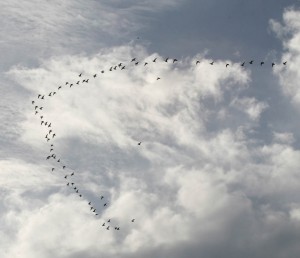
An evening flock of whimbrel leaves the Delmarva Peninsula for its journey north. Photo by Barry Truitt.
During the spring of 2009, CCB biologists, in collaboration with The Nature Conservancy (TNC) and the U.S. Fish and Wildlife Service, studied the stopover ecology of whimbrel staging along the Delmarva Peninsula in Virginia. A large number of individuals were captured and fitted with conventional, 60-day, digital VHF transmitters to investigate stopover duration. With funding from the Northern Neck Audubon Society, CCB biologists shipped a receiver/datalogger to biologists Karen McDonald and Matt Brady of the Toronto and Region Conservation Authority. The receiver/datalogger unit was deployed on a small building located in Colonel Samuel Smith Park and the Lake Shore Yacht Club, a popular birding spot. The datalogger was programmed to scan continuously for 38 transmitter signals. Biologists with the Ontario Ministry of Natural Resources also flew helicopter surveys, using a datalogger to search for these radio tagged birds on the breeding grounds, but did not detect any whimbrels.

Whimbrel wearing a VHF transmitter. Photo by Barry Truitt.
The datalogger deployed in Toronto detected 10 (26%) of the whimbrels marked in Virginia. This is an amazingly high percentage given that the datalogger at that height above the ground likely had a range of less than 5 miles and that the straight line distance between the two locations is more than 500 miles (800 km). This result connects the whimbrels that stage along the Delmarva Peninsula to the birds passing through Toronto and further identifies Toronto as a spring bottleneck for migrating whimbrels. All of the birds moving through Toronto were detected between 22 and 28 May. Two of these birds that were detected in Virginia just prior to leaving made the 500 mile flight averaging 40-50 miles per hour (65-81 km/hr). One of these birds made the trip in 11.5 hours.

Whimbrels, willets, and laughing gulls roost in the marsh along the Delmarva Peninsula. Photo by Barry Truitt.
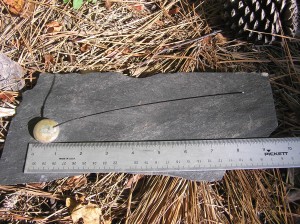
9.5-gram VHF transmitter for a whimbrel. Photo by Carla Schneider.
In addition to collaborating on the migration of radio-tagged birds, the Center for Conservation Biology (CCB) and the Toronto Ornithological Club (TOC) initiated a new “Whimbrel Watch” project. In Toronto, Mark Cranford of T.O.C. coordinated observers and observation points to estimate the number of birds passing through the greater Toronto area during the period of peak passage. In Virginia, biologists counted the number of birds leaving the Delmarva study area. In the 3 to 4 hours before dusk, whimbrel rise up from the marsh making contact calls, arrange in V-formations, and begin their flight north. Between 20 and 29 May, CCB and TNC counted 5,849 whimbrel leaving the lower Delmarva Peninsula.
Project sponsored by The Center for Conservation Biology (CCB), the Toronto Ornithological Club (TOC), and the Toronto and Region Conservation Authority (TRCA).

